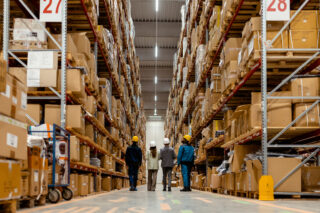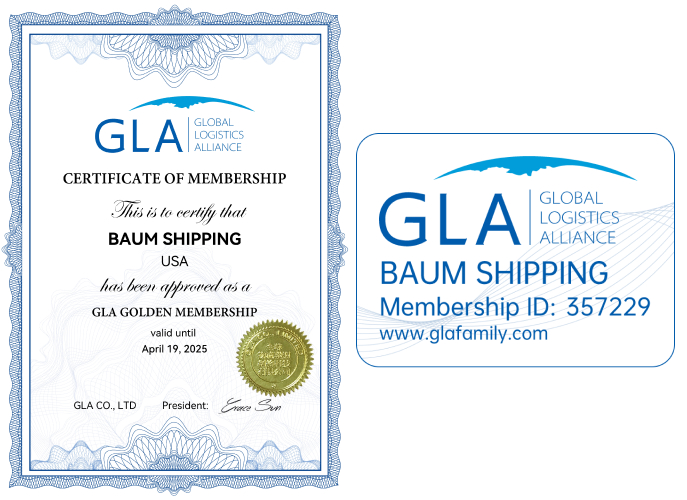Streamlining Nearshoring: How Mexico Brokerage Services Support North American Manufacturing
November 4, 2025 Uncategorized
In today’s global supply-chain landscape, many manufacturers are rethinking their offshore strategies. The trend toward nearshoring—relocating or expanding production closer to key consumer markets—is stronger than ever. And for companies operating in North America, Mexico has emerged as the strategic destination of choice.
Mexico’s geographic proximity to the U.S., favorable trade frameworks, and established manufacturing base all support this shift. But with the opportunity comes complexity—and that’s where reliable Mexico brokerage services and cross-border trade solutions play a pivotal role.
Why Nearshoring to Mexico Makes Sense—and Why Brokerage Services Matter
The Appeal of Nearshoring Mexico Logistics
- Shorter lead times and reduced transit risk: Producing in Mexico means goods are closer to U.S. consumer markets and can respond more dynamically to demand changes.
- Trade-friendly environment: Under the United States–Mexico–Canada Agreement (USMCA), regional production enjoys tariff advantages and stronger integration into North American supply chains.
- Strong growth in manufacturing and logistics infrastructure: Industrial real-estate demand in Mexico has surged, spurred by nearshoring investment and the need for robust logistics support.
Manufacturing Imports Mexico & Cross-Border Complexity
Relocating manufacturing operations into Mexico doesn’t just mean building a factory and shipping goods to the U.S. It triggers a cascade of logistics, documentation, customs, and compliance tasks. For example:
- Determining correct classification and valuation of goods.
- Verifying country-of-origin and regional content to qualify for USMCA benefits.
- Navigating Mexican customs (and U.S. imports) with differing rules, duties, and regulatory regimes.
- Coordinating transport from Mexico to U.S. markets, including cross-border trucking, rail, or intermodal.
- Monitoring inventory, tracking shipments, and managing returns or reverse logistics.
When a manufacturer overlooks one of these steps, delays, higher costs, or compliance issues can erode the advantages of nearshoring. That’s why aligning with a seasoned customs broker and logistics partner is not optional—it’s essential.
The Role of Baum Shipping: Your Bridge for Nearshoring Success
At Baum Shipping, we’ve honed our cross-border expertise so you can focus on what you do best—manufacturing and innovation. Here’s how we support nearshoring operations every step of the way:
1. Strategic Brokerage Support for Mexico
Our licensed customs brokers in Mexico and the U.S. bring deep knowledge of customs requirements, tariffs, and trade regulations. We help ensure your manufacturing imports into Mexico and exports from Mexico to the U.S. meet all compliance thresholds. This means smoother clearance, fewer surprises, and faster flow of goods.
2. Logistics Coordination & Visibility
Manufacturing operations relocating or expanding into Mexico need an end-to-end logistics strategy. Baum Shipping offers real-time tracking, carrier coordination (truck, rail, intermodal), and cross-border support. By aligning your factory output with transport and border strategies, we work to eliminate bottlenecks and optimize timing.
3. Trade-Compliance Assurance
In the age of nearshoring, trade compliance is more than paperwork—it’s a competitive advantage. With Baum, you get:
- Review of HS codes, tariff classifications, and duty planning.
- Verification of content and origin (to maximize USMCA benefits).
- Pre-border audits and documentation checks to minimize border delays.
- Support for regulated goods, customs inspections, and import/export declarations.
4. Tailored Cross-Border Trade Solutions
Every nearshoring scenario is unique—different sectors (automotive, electronics, consumer goods) have different requirements. At Baum Shipping we tailor cross-border trade solutions to your industry, manufacturing footprint in Mexico, and supply-chain strategy. Whether you’re ramping up production in Mexico or expanding a multi-plant network, we scale with you.
How the Process Works: From Plant Floor in Mexico to U.S. Market
- Factory setup & inbound components – Raw materials or components arrive in Mexico, with Baum coordinating customs clearance and Mexican import logistics.
- Manufacturing & value-add operations – Production occurs; tracking and inventory management keep visibility real-time.
- Export preparation & customs brokerage – Finished goods are prepared for shipment to the U.S.; Baum’s brokers handle export documentation, origin certification, and border filings.
- Transport & border crossing – Goods move via truck, rail, or intermodal across the border; Baum coordinates carriers, files entries, and ensures seamless border logistics.
- U.S. distribution & final delivery – Once cleared, goods are delivered to U.S. facilities or distribution centers, with Baum’s network and visibility tools ensuring follow-through.
By orchestrating these steps in concert, Baum Shipping becomes more than a service provider—it becomes an integrated partner in your nearshoring strategy.
Final Thoughts with Baum Shipping
The nearshoring wave in Mexico is real—and it’s reshaping the manufacturing landscape in North America. For companies taking advantage of this shift, success hinges not only on where you build—but on how you move goods, manage compliance, and coordinate logistics across borders.
With nearshoring Mexico logistics, manufacturing imports Mexico, and robust cross-border trade solutions, Baum Shipping stands ready to guide your journey.
If you’re relocating or expanding manufacturing operations into Mexico—let’s connect. We’ll help you turn the promise of nearshoring into a streamlined, cost-effective, and risk-managed supply chain asset.



